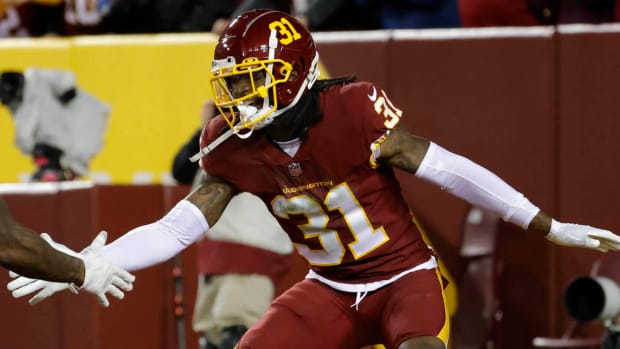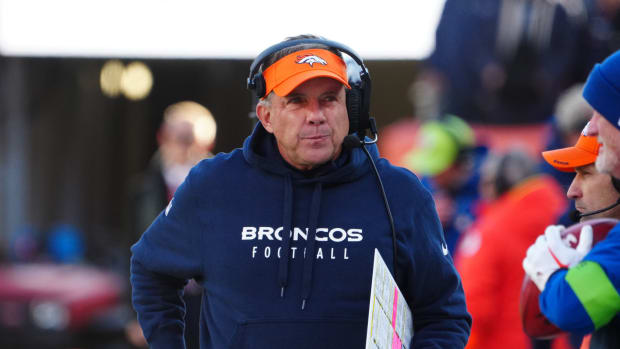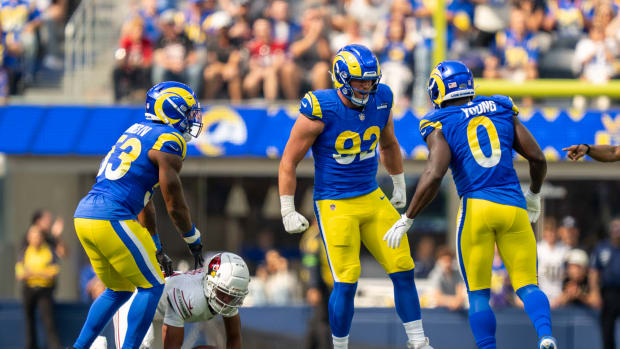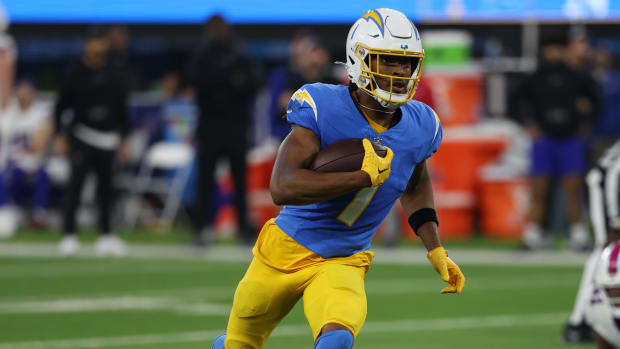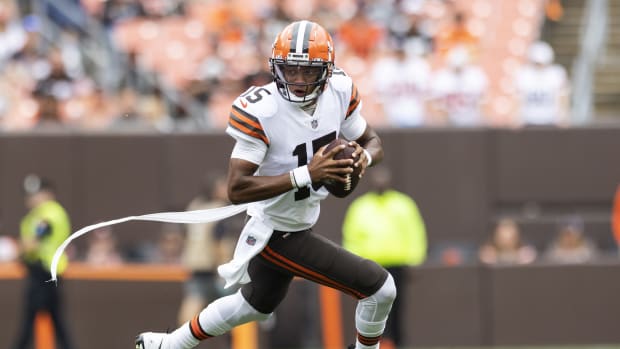Russell Wilson's Broncos Breakup Was Inevitable
Russell Wilson has arrived on the open market for the first time in his career after being let go by the Denver Broncos on Monday. In a statement, he posted that “tough times don’t last” and that he is “excited for what’s next.” Two years ago, it would have been unfathomable for us to challenge those statements as it pertains to Wilson personally.
Now, “what’s next” feels more uncertain for Wilson than it does Jacoby Brissett, Gardner Minshew or any of the other quarterbacks resting below the top tier of available (or seemingly available) players such as Kirk Cousins or Justin Fields. How did we go from a Super Bowl, to a series of borderline MVP campaigns, to being the main piece of the worst trade in NFL history to, currently, being a free agent who may or may not find himself in a starting position on opening day 2024? Plus, a player who leaves behind the largest dead cap hit in NFL history?
The truth is that everyone was, at least a little bit, hoodwinked. Did you ever see the YouTube clip of David Copperfield making the Statue of Liberty disappear? Spoiler alert: He didn’t actually make the 305-foot tall statue disappear. He (allegedly) put the audience on a rotating podium and when the curtain blocking their view of the statue fell, the podium shifted toward total darkness, creating the illusion that there was no more statue. It was the early 1980s, man, and we were ready to believe anything. Don’t worry, Copperfield put it back.
In this scenario, we are the audience, and Wilson’s offensive coordinators and surrounding personnel were the magicians. Wilson was always Wilson, though thanks to Seattle’s incredibly elite core of speedy wide receivers, punishing run game and a generational defense with a major schematic edge, he was granted a long runway of time with which to find himself as a player, develop some strengths and pinball through the development of an offense that could accentuate those strengths. Brian Schottenheimer, Darrell Bevell, Shane Waldron and Dave Canales could rotate the podium just enough to create the illusion of a franchise quarterback. And we all went about our day gleefully believing that an elephant in a room can simply vanish when a man in tight black pants (or a Seahawks cap and a windbreaker) waves his hands.
This isn’t to say that Wilson was a bad quarterback. Instead, we were viewing much of his theatrics through a magical lens; a set of parameters that would be difficult to recreate elsewhere as we would soon find out. He was like Mac software being run on old Windows. He was a key to a Porsche being jammed into the ignition of a Honda Accord.

Wilson and the Broncos were never a good fit, with Denver going 11–19 with Wilson under center.
Ron Chenoy/USA TODAY Sports
With that illusion developed something of a hubris. Wilson wanted to take steps into the realm of the play-calling quarterback. He wanted out of Seattle because he wanted what he perceived as guardrails to be removed. He also wanted to rely less on the circuitous nature of his backfield antics, which bought time for his unique receivers to get downfield and find mismatches.
Fast forward to Denver, and Wilson didn’t look like the strategically lean quarterback we were used to. Instead, he dealt with what appeared to be nagging injuries. His willingness, or ability, to escape the pocket almost totally vanished, which impacted the team’s ability to pick up some easier first downs. By the end of his first game in orange, he was missing enough designed shots that the coach had to decide between two team captains with the game on the line, and chose a kicker.
His first coach, Nathaniel Hackett, was fired because, surely, we were not just seeing Wilson as he truly was. Then, by December of last year, Sean Payton and Wilson were screaming at one another on the sideline. The Broncos had already made an attempt to move on from Wilson as the starting quarterback.
So, when Wilson talks about what is next, one has to wonder if he, himself, sees the entirety of the picture now; if he, like the rest of us, can simply crane his neck and see the big statue sitting in the middle of the Hudson River. In order for Wilson to succeed, in order for him to be founded in his excitement, he is going to need to find a team with talented skill position players. He is going to need to find a great complementary defense. And, he’s going to have to find a coach accepting of Wilson’s need to bend a play to its absolute breaking point—sometimes far out of structure—in order to have it make sense to him. He’s going to have to push his now 35-year-old (turning 36 next season) body to its limits and submit to a workload that will likely include 90 bone-crunching rushes per season.
The strange part? This really isn’t about blame. One can see why Wilson would want to venture off. One could see why Hackett immediately sensed something was wrong and spent the year in the midst of an awkward pivot, crunched beneath the political reality of Wilson’s contract. One can see why Payton, given his past, thought he could fix it and entered his first year with a brazen confidence, but with the assurance that he could eventually pull the ripcord, and eat nearly $90 million in dead money just to have Wilson out of the building.
If anything, we should all be angry at Pete Carroll, Seahawks general manager John Schiender and the troika of offensive coordinators for simply keeping the secret for so long. Wilson was a very good quarterback in a perfect situation. He will not go down as Peyton Manning or Tom Brady or Drew Brees, who could draft 10 teammates from a line outside of Auntie Anne’s Pretzels and still score 21 points in a half.
He will, however, go down as the ultimate illusion. A person who made us believe so sincerely that he had no choice but to believe himself.
Rewatching the Copperfield trick, one can’t help but feel bad for the audience. They were destined to be buried on some dusty VHS and planted in a time capsule to be made fun of years later. How didn’t they see it? How couldn’t they put the picture together? One woman, interviewed right after the execution of the trick, uttered one of the greatest quotes in the history of interviews: “I have never seen a Statue of Liberty disappear the way that this one did.”
And until the Wilson saga, the football viewers of our generation hadn’t either.

































